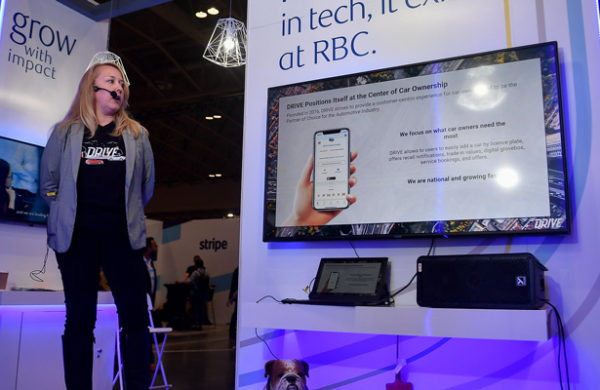
You’re facing down a tight deadline, a packed agenda, and one shot to set the tone for your entire sales year. No pressure, right? Your sales kick-off has to do it all: energize the team, roll out new initiatives, and create strategic alignment that lasts beyond the event. So, lots of pressure, actually.
Lauren Reeves, COO at Meeting Tomorrow, has helped hundreds of companies plan high-impact internal sales and leadership events over the last 18 years. Her biggest piece of advice? Think of beyond this single event — your SKO is where you hardwire the sales strategy for the next twelve months.
We’ve seen firsthand how the right approach can transform a standard sales kick-off meeting into a strategic catalyst that drives results for months. The difference between a forgettable event and one that genuinely moves your business forward comes down to five essential strategies. In this guide, you’ll learn how to pick your audience, maximize your ROI, and leave a lasting impression that extends far beyond the closing session.
1. Rethink Your SKO Guest List
The first mistake we see companies make? Defaulting to “just the sales team” without thinking bigger. Your attendee list shapes everything: agenda, content, venue, and cost. More importantly, it determines whether your sales kick-off event creates true organizational alignment or simply becomes another meeting that sales attends alone.
As Lauren describes: “One challenge we see often is clients trying to decide: what is the definition of our sales team? What about your account managers, relationship managers, or your product team?”
We recommend reflecting on which teams have the biggest impact on sales. Depending on your business, this could be account managers, product teams, marketing, and customer success. These are the people who directly impact your sales team’s ability to succeed. When marketing understands the same messaging priorities your sales team heard, your campaigns align better. When product teams hear customer feedback directly from sales, your roadmap becomes more customer-focused.
Think about your typical sales cycle. How many touchpoints involve people outside of traditional sales roles? Your customer success team handles renewals. Your product team answers technical questions. Your marketing team creates the content that supports every sales conversation. These people belong in your sales kick-off planning conversation.
Why This Matters
Including the right people drives true alignment. It reduces silos and gets support teams moving in sync with sales. We’ve watched companies struggle all year because their sales team learned new positioning that marketing never heard of, or because product updates were shared in isolation from the teams who needed to sell them.
When you expand your guest list thoughtfully, your SKO becomes a strategic alignment moment rather than a departmental pep rally.
2. Nail the Big Three: Motivation, Training, Team Building
Every great sales kick-off balances three essential pillars: motivation, training, and team building. These elements work together to drive alignment and momentum long after the event ends. The most successful ones always hit all three areas with intention.
Motivation & Inspiration
Start with compelling keynote speakers, future-state goals, and executive vision. Your opening should get teams emotionally invested in a big-picture purpose. We love using corporate event walk-on songs to create energy right from the start.
Your motivation component shouldn’t feel like generic cheerleading. Connect your team’s daily work to larger company goals, market opportunities, or customer impact. Share stories about wins from the previous year, but also paint a clear picture of what success looks like moving forward.
Product Training
Maximize in-person time for hands-on learning, demos, and role-playing. Keep sessions focused and relevant to everyday sales conversations. As Lauren notes, “When everyone’s in person, that’s a great opportunity to do the heavy lifting of the training.”
Virtual training has its place, but sales kick-off meetings offer something unique: the chance for real-time questions, collaborative problem-solving, and immediate feedback. Use this time for complex product demos, objection handling practice, and scenario-based learning that’s hard to replicate remotely.
Team Building
Build relationships across roles and geographies through intentional exercises that create connection and collaboration. This goes beyond trust falls and icebreakers. Design activities that help people understand each other’s challenges, share best practices, and build the working relationships they’ll need throughout the year.
Some of our most successful team-building moments happen during structured networking, cross-functional problem-solving sessions, or even shared meals where people can connect naturally.
Why This Matters
These three elements combine to energize your team, increase retention, and sharpen skills, making your SKO a true launchpad rather than another meeting. When motivation, training, and team building work together, your people leave feeling confident, connected, and clear on their priorities.
3. Link Your Kick-off to Long-Term Sales Goals
Your sales kick-off should reinforce broader internal messaging and goals. Think of it as a high-impact moment within a longer campaign, not a standalone event that exists in isolation.
Include ongoing communications, virtual follow-ups, and reinforcement tools that extend your SKO’s impact throughout the year. “Think about each one of your event goals in the scope of all internal communications over the course of the year,” says Lauren.
This means your sales kick-off themes, messaging, and priorities should align with quarterly business reviews, monthly team calls, and annual planning processes. If your SKO introduces new positioning, your marketing team should be ready to support it with consistent materials. If you launch new sales processes, your training team should have follow-up sessions planned.
We recommend creating a 90-day post-event plan before your sales kickoff even begins:
- What concepts need reinforcement?
- Which tools require additional training?
- How will you measure the adoption of new strategies introduced at the event?
Why This Matters
Treating your SKO as part of a larger strategy drives consistency, boosts adoption, and creates measurable results over time. The companies that see the biggest return from their sales kick-off events are the ones that view them as campaign launches, not isolated meetings.
4. Be Strategic with Budget and Optics
Create a high-quality experience while being smart about perception. Invest in what matters most: content, delivery, and accessibility. Avoid overindulgence that can hurt internal trust or ROI metrics.
Smart budget decisions often involve creative thinking. As Lauren shares, “We had one client recently decide to merge two major meetings for their sales team and relationship managers to get better alignment and streamline planning.” Sometimes the best investment is combining events to create a greater impact while reducing overall spend.
Focus your budget on elements that directly support your goals. Professional AV equipment improves content delivery. Quality venues enhance focus and networking. Expert facilitators make training more effective. These investments pay dividends in engagement and retention.
However, be mindful of perception. Lavish experiences can create negative internal buzz, especially if your company is going through cost-cutting measures or if sales teams are missing targets. We help clients find the balance between impactful and appropriate.
For more guidance on managing event expenses effectively, check out our post on how to rein in your event budget without sacrificing impact.
Why This Matters
Smart budgeting balances impact with optics, keeping leadership confident and teams appreciative without wasting spend. The goal is to create an experience that feels valuable and professional while staying aligned with company culture and financial realities.
5. Use Your Meeting Theme as a Strategic Tool
Your theme should drive your content, not simply decorate your graphics. Align it to your core objectives: launch readiness, market expansion, retention, or whatever strategic priority your sales organization needs to focus on.
Build your theme into speaker introductions, visuals, breakout session names, and even internal communications cadence. According to Stanford research, stories are remembered 22 times more than facts, making story-driven event themes crucial for retention and engagement.
Here are examples of strategic sales kick-off themes:
- “Ignite the Future” — The story: Now is the time to take risks, emphasize innovation, forward-thinking, and set sights on future trends and opportunities.
- “Winning Together” — The story: Collaboration, mutual support, and shared success have never been more important to launch your next step.
- “We’re Not Who We Were” — The story: You’ve changed. Now there are new products, people, and priorities. This kick-off marks the moment the outside world sees that, too.
- “This Time, It’s Personal” — The story: Relationships are the strategy. The way we sell, support, and show up will define our brand. A fit for teams doubling down on customer intimacy.
- “The Year the Middle Mattered” — The story: Everyone talks about new logos and big closes—but this year, it’s about consistency, follow-through, and delivering all year long.
The best sales kick-off theme ideas connect emotionally while providing practical focus. Your theme should give people language to use throughout the year when discussing priorities, challenges, and wins.
We recommend testing your theme with a small group before committing. Ask yourself:
- Does it resonate with your audience(s)?
- Can it work across different types of content?
- Will it still feel relevant in six months?
Why This Matters
A strong, strategic theme unifies your message and creates emotional resonance, helping your SKO stick long after the event ends. Themes provide memorable frameworks that people can reference throughout the year, making your strategic priorities more actionable and shareable.
Set the Tone for a Stronger Sales Team
A great sales kick-off meeting sets the tone for how your sales team will show up all year. It lays the foundation for a focused, energized, and aligned sales cycle. When you include the right people, deliver high-impact content, and connect your event to larger business goals, your SKO kicks your sales momentum into hyperdrive.
Ready to turn your SKO into a strategic win? Talk to Meeting Tomorrow’s event experts about how we can help bring your vision to life.
Frequently Asked Questions about Sales Kick-offs
What does sales kickoff mean?
A sales kickoff (SKO) is the official start to your company’s new sales year. It’s where your revenue team comes together to align on strategy, build momentum, and set the tone for what’s ahead. Think of it as the “launch moment” for your people, not just your product.
What is the annual sales kickoff?
An annual sales kickoff is a once-a-year event that brings your sales, marketing, and customer-facing teams together to align around big goals. It usually includes training, recognition, and a mix of inspiration and planning. The best SKOs hype up your team and give them tools to win.
How to run a sales kickoff?
Start by setting clear goals: Are you focusing on alignment, motivation, or training? From there, build an agenda that mixes strategy sessions, skill-building, and team connection. Choose a strong theme, plan content that supports your objectives, and make sure every session ties back to the bigger picture.



